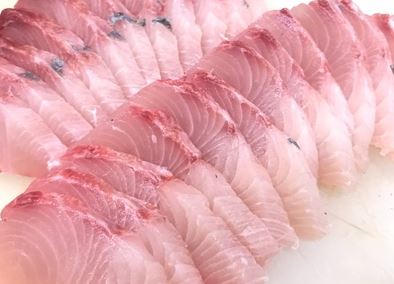
At sushi restaurants, sushi toppings are classified as Akami (Aka means ‘red’ and mi means ‘flesh’), Shiromi (Shiro means ‘white’), Hikarimono (Hikari means ‘silver’), and so on. These names are derived from the color of the flesh and the appearance of the fish. However, since there is no clear definition, different sushi chefs have different classifications. For example, if the fish has shiny skin, it is called Hikarimono, and if the skin is removed, it is called Shiromi.
Basically, if the flesh is white, it is called Shiromi. If it is red, it is Akami, but if it is beige, it is called Iromono (Iro means ‘colored’). It may be an obsolete term nowadays, but among older sushi chefs, it makes sense.
The fish that fall into this Iromono category include Hiramasa, Kanpachi, Buri, and Shima-aji. Sawara should also be classified as Iromono, but since Sawara is a newcomer to the Edomae sushi category, it is not classified as Iromono.
It is difficult for the ordinary person to understand what is going on. To add to the confusion, Hiramasa, Kanpachi, Buri, and Shima-aji are called Aomono (Ao means ‘blue’) because they are blue-back fish. This is used primarily as a fishing term.
[sc_apply url=”https://sushiuniversity.jp/apply/”]
We hope this information will be helpful.

Revision date: February 11, 2023
Share this article